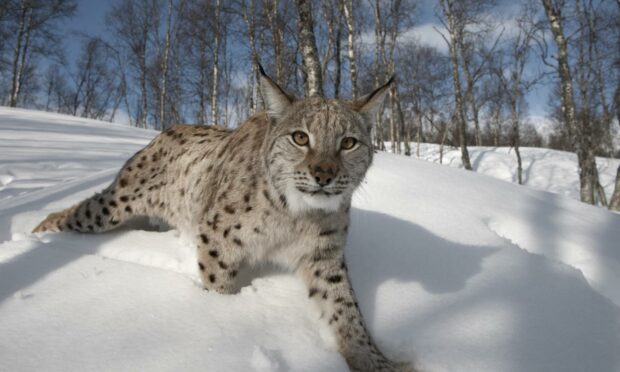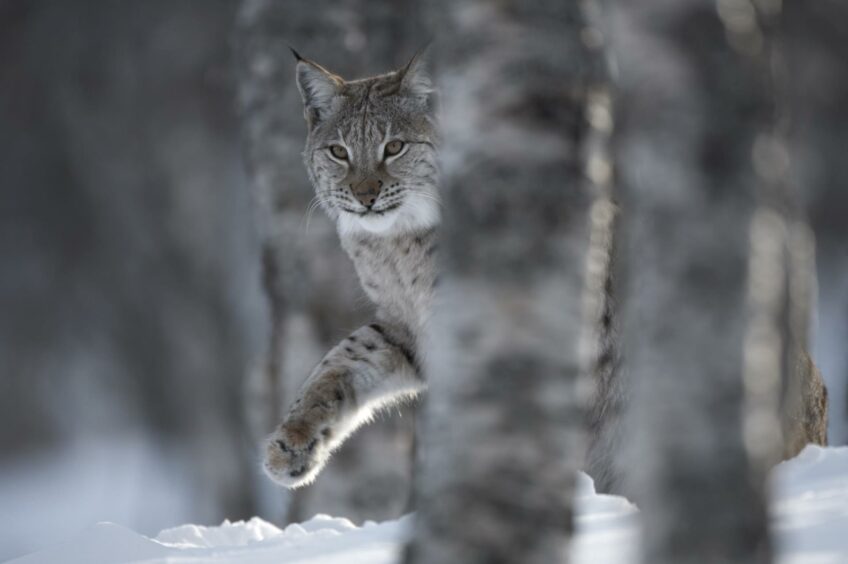A year-long study has suggested now is not the time to reintroduce lynx to Scotland.
Discussions around reintroducing the spotted cats have been rumbling on for years, after they became extinct about 1,300 years ago.
But while some conservationists believe there are moral and ecological reasons for bringing back the lynx, repeated concerns have been raised about the impact they may have on sheep farmers.
Now a year-long study commissioned by the Lynx to Scotland project has suggested that while, overall, there is support for their reintroduction, now is not the right time.
The research found there is sufficient appetite from rural stakeholders to examine whether potential barriers to a trial reintroduction of Eurasian lynx to Scotland can be overcome.
The team has now proposed a working group should be formed.
Highland has enough habitat
Organised by charities including The Big Picture, Trees for Life and the Vincent Wildlife Trust, researchers conducted more than 100 interviews as well as several online webinars and four community events.
Contributions from a range of groups including farmers, gamekeepers, foresters, conservationists, landowners, tourism operators and rural communities have been considered, along with feedback from stakeholders and communities in the Cairngorms National Park and Argyll.
Previous research suggests the Highlands has enough habitat – and roe deer, the animal’s preferred prey – to support a population of around 400 wild lynx.
The staff said a successful reintroduction is more dependent on people’s attitudes than the ecological science.
Among the wide-ranging views, there was consensus for a cross-stakeholder approach to further explore the benefits of, and barriers to, lynx reintroduction.
Time to build trust between stakeholders
The study recommends setting up a Lynx Action Group to build trust between stakeholders and address areas of disagreement over science and local knowledge, as well as the real and reasonable concerns of some stakeholders.
Peter Cairns, executive director of Scotland: The Big Picture, said: “When it comes to the return of the lynx, we’re in the realm of not yet – but not never.
“Positively, this new research shows there is sufficient appetite amongst different stakeholders to develop a more comprehensive understanding of this little-known species and the potential for its return to Scotland.”
Different perspectives were identified, with some supporting reintroduction because of the environmental and economic benefits, some against, and others who do not think lynx should be reintroduced now but are open to discussing the future potential.
Steve Micklewright, Trees for Life’s chief executive, said: “Properly assessing and listening to all views is key for the proposed return of an animal that has been absent from Scotland for a long time.”
Jenny MacPherson, science and research programme manager at Vincent Wildlife Trust, said: “Overall, rather than sparking controversy, discussions around lynx reintroduction saw open debates which were passionate, robust and respectful, and contributed different views, knowledge and experiences.”
“Apex” predators such as lynx are missing in the UK due to hunting and habitat loss.
Lynx are known as a keystone species because they maintain balance and diversity in an ecosystem, and other species and the wider environment are affected by their absence.
The Lynx to Scotland study was carried out between March 2021 and February 2022. For more details, see scotlandbigpicture.com/lynx-to-scotland


